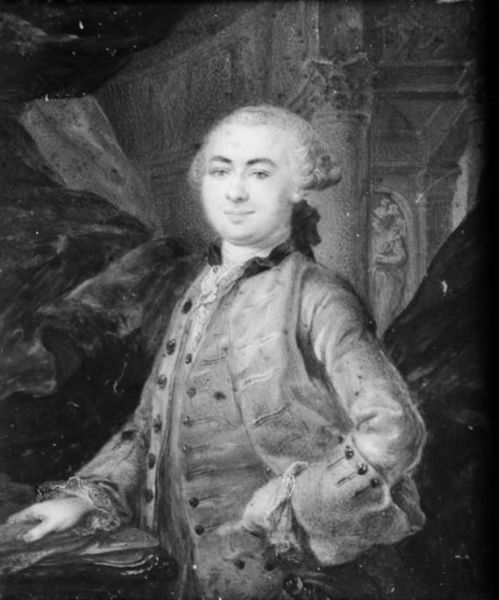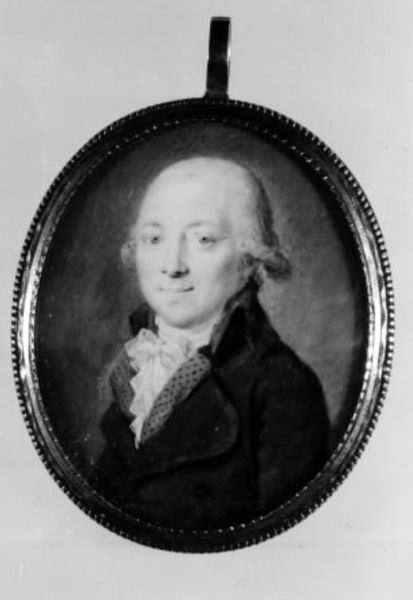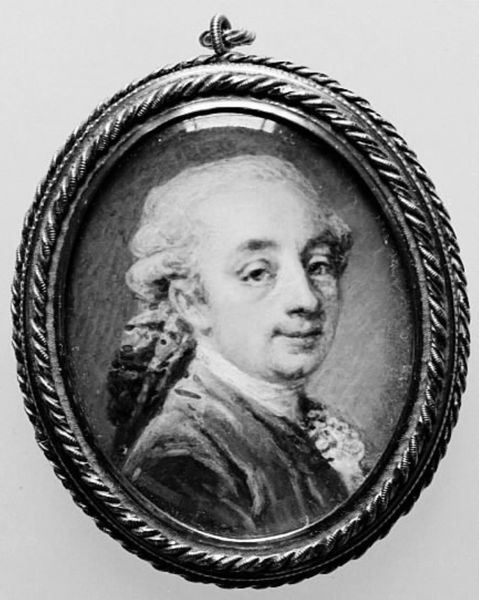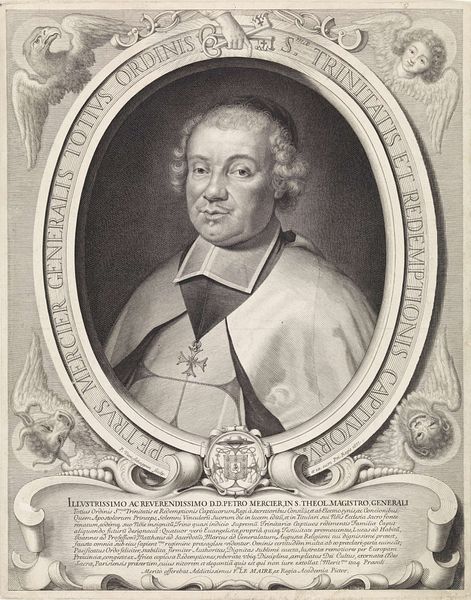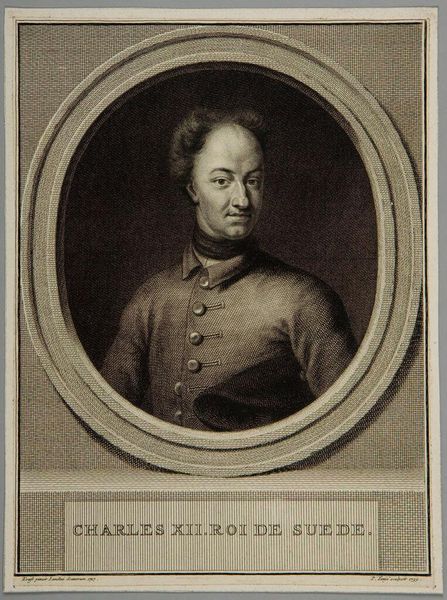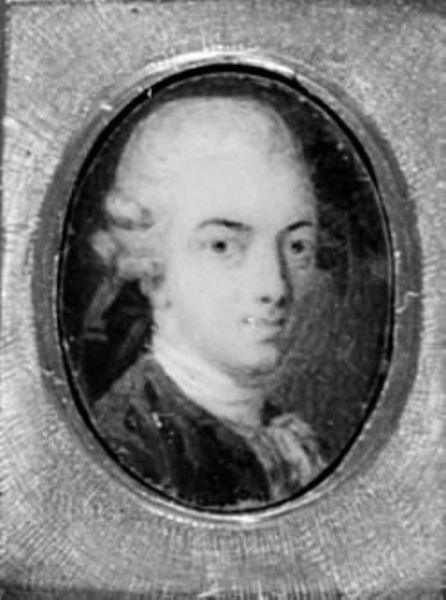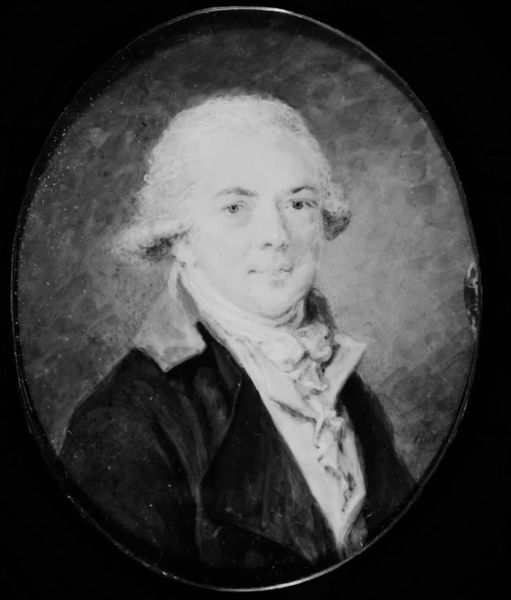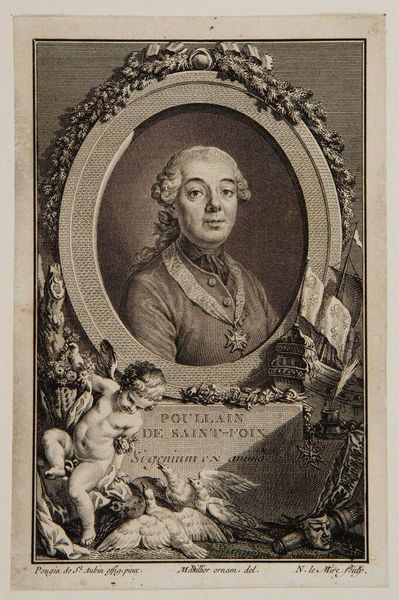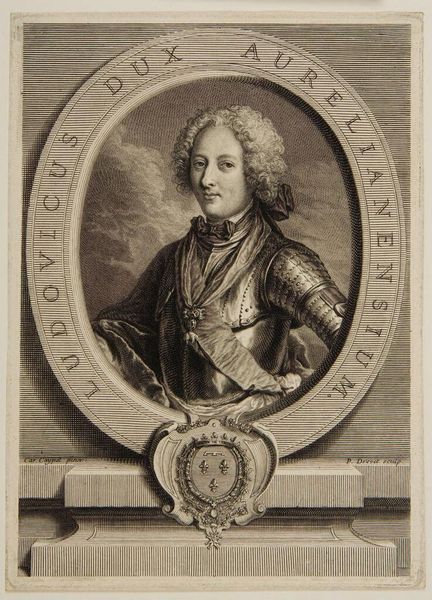
Ubekendt officer af Frederik V's livregiment 1745 - 1780
0:00
0:00
Dimensions: 7.1 cm (height) x 6.1 cm (width) (Netto)
Curator: Standing before us is "Ubekendt officer af Frederik V's livregiment," or "Unknown Officer of Frederick V's Life Regiment." The artist, Andreas Thornborg, likely completed this oil painting sometime between 1745 and 1780. Editor: The monochrome palette gives it an antique feel, doesn't it? Somber, maybe even a little severe, despite the ornate frame. Curator: Yes, and the sitter's identity is as much a material absence as the muted colours. Portraits like these, often commissioned by or for the officer class, solidified power structures in Danish society, particularly concerning the monarchy. It brings up questions about how gender and class intersect within military and social hierarchies. Editor: Power is definitely the key here. It’s right there in the meticulous detail on the uniform—the weave of the fabric, the cut of the coat. Look at the time and labour it took to produce this image; consider the social capital involved. Who was making the fabric, painting this, and for whose consumption? The material signifies wealth, position. Curator: Exactly. Thornborg positions his subject deliberately. While we can't say with certainty who this man was, his dress, pose, and accoutrements point to someone of notable status. But absence of name provokes thought about erasure from history, or anonymity, a collective experience maybe in face of absolute rule. Editor: I keep returning to the frame. It looks like worked silver. Frames in that era weren’t just decoration; they elevated the status of the painting, and the sitter. They’re both structural and symbolic; trapping this "unknown officer," if you will. Curator: Yes! The choice of monochrome seems less about style and more about reproduction. Did this artwork exist also as a copperplate engraving that circulated in Copenhagen? The portrait’s distribution through prints could affect readings across lines of gender, race and class. Editor: To think of it being copied and printed…That pushes me back to considering its initial creation: the labour, and cost behind the paints, the brushes, the canvas. It forces us to examine art not just as an image, but as an object embedded in a network of production and consumption. Curator: Absolutely. Reflecting on how Thornborg's historical portrayal echoes or challenges contemporary discussions on gender, identity, and visibility allows us to critically examine the narratives of power then, and how those play out even today. Editor: Looking closely at its construction helps peel back the layers of its creation and connect to tangible lives of those making, viewing and owning at the time, as well as asking whose labour this man's uniform was built upon.
Comments
No comments
Be the first to comment and join the conversation on the ultimate creative platform.



